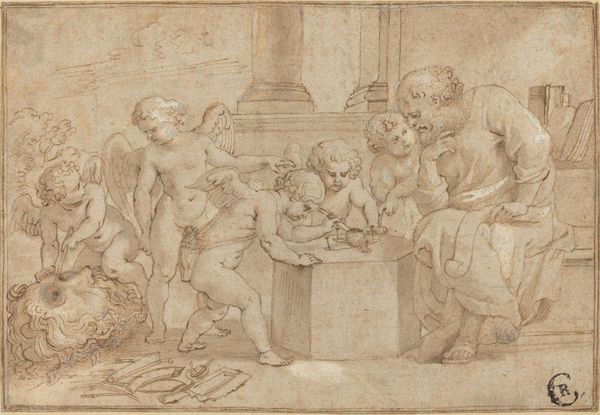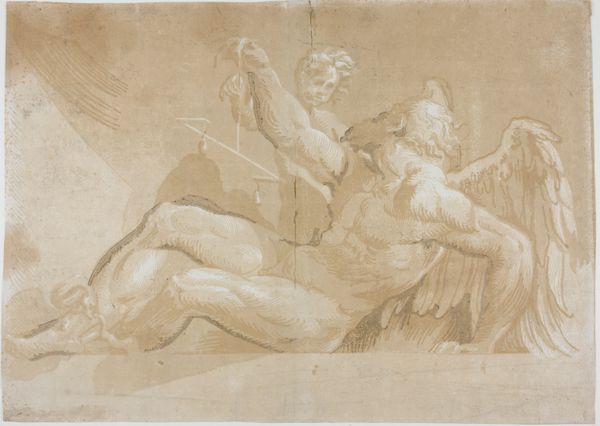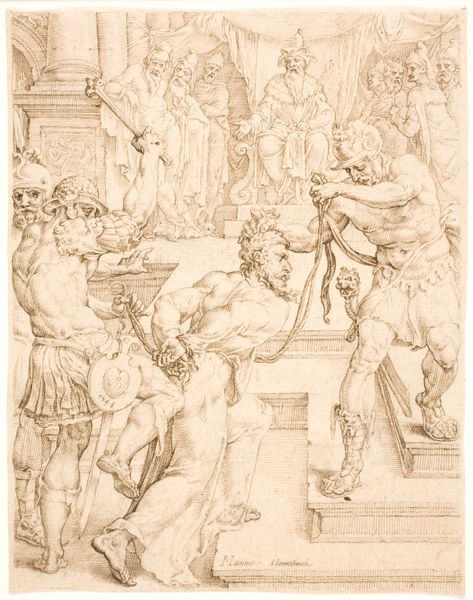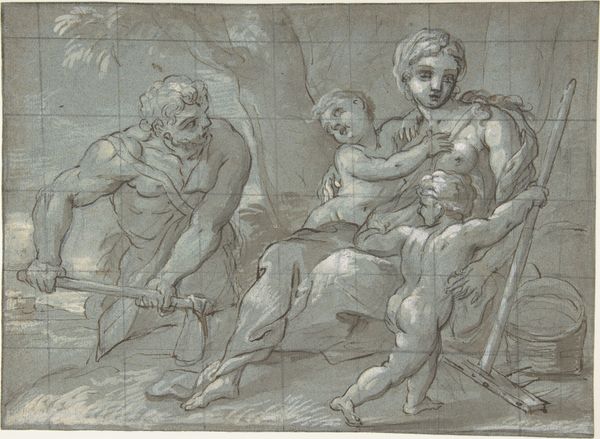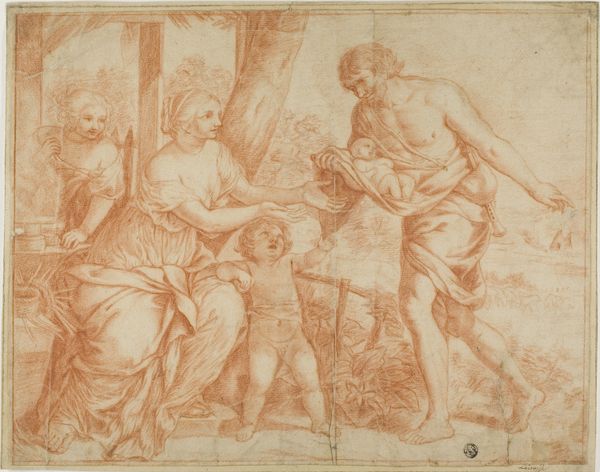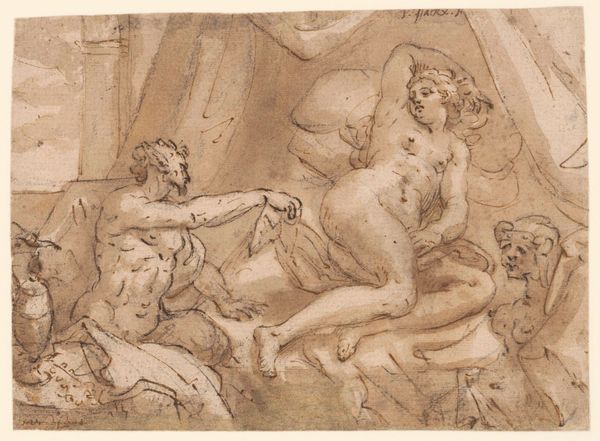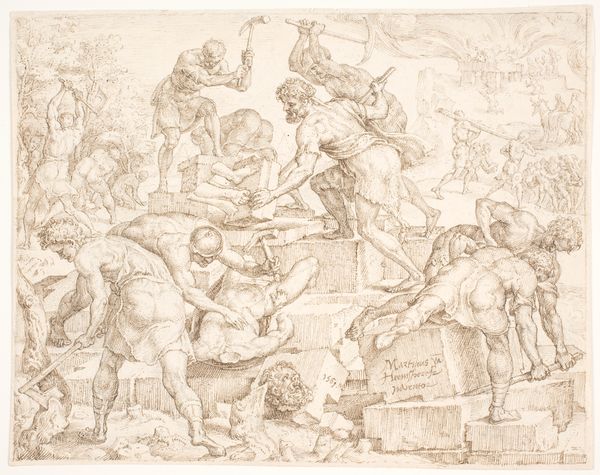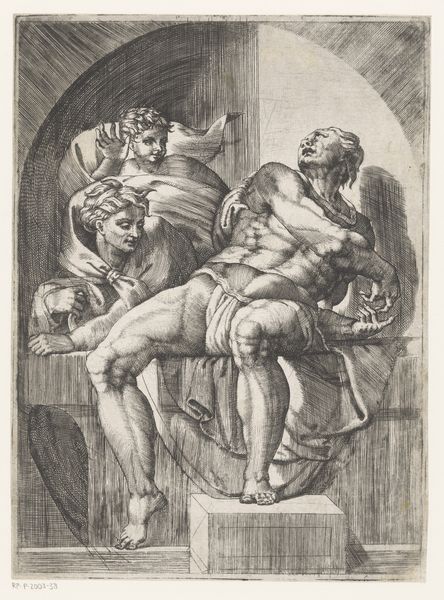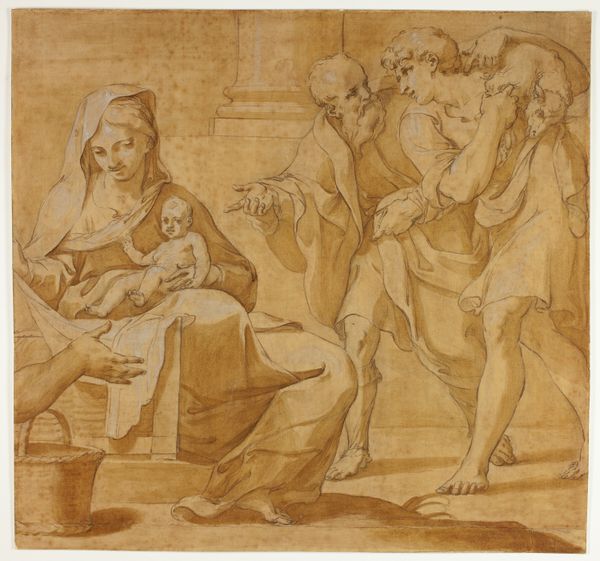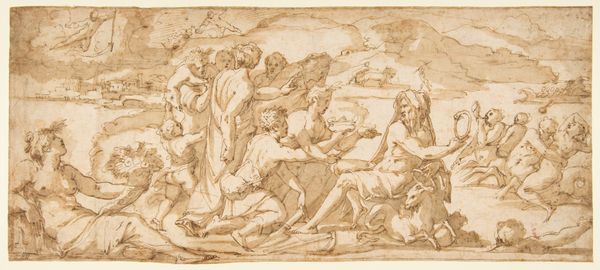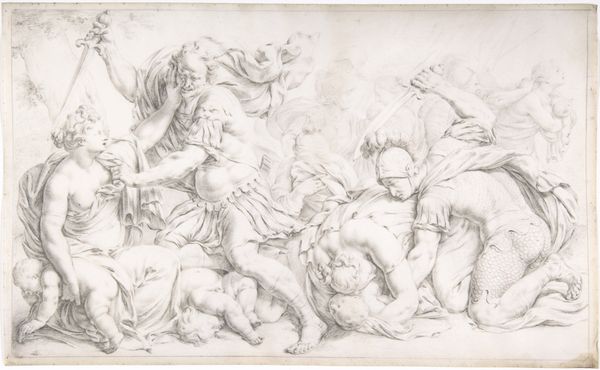
drawing, print, ink
#
drawing
#
allegory
#
baroque
# print
#
charcoal drawing
#
figuration
#
11_renaissance
#
ink
#
cupid
#
nude
Dimensions: 7 1/4 x 10 13/16in. (18.4 x 27.4cm)
Copyright: Public Domain
Curator: Today we’re looking at a drawing titled "Venus and Cupid in Vulcan’s Forge" by Domenico Piola, likely created sometime between 1627 and 1703. It is rendered in ink, charcoal and possibly other drawing media, giving it an incredible tonal range. Editor: My first impression is that it's full of controlled energy. Despite the mythological subject matter and all that muscularity, the restricted palette makes it feel surprisingly grounded. The monochromatic approach is very evocative of classical sculpture and statuary. Curator: That's insightful. It’s worth noting the choice to depict Vulcan, the blacksmith god, at work with Venus and Cupid in his vicinity. This situates their complex relationship within a framework of labor, production, and perhaps even a patriarchal power dynamic. The depiction of the nude forms in a moment of creation might serve as an allegory for not only creative and artistic endeavors, but the subjugation or empowerment within different kinds of love. Editor: Definitely. Considering the continuous use of the Venus and Cupid narrative, and even Cupid as a standalone figure in Western art, Piola contributes to a long lineage of symbols, often alluding to ideas about ideal beauty and, obviously, different types of love and longing. And looking at the winged figure, in this configuration of production he might be more a symbol of impish misdoing rather than love, he looks caught or imprisoned, to an extent. Curator: Exactly, the bondage and captivity are visually suggested, which raises questions about agency within these archetypal roles, especially in relation to gender. What are we to make of Venus’s implied participation versus her son’s confinement? The entire image reflects social anxieties concerning both production and gender roles of the time, all intertwined. Editor: Yes, there’s that push and pull again, the enduring fascination with these myths… but it also seems Piola is perhaps commenting, with careful, purposeful rendering, on their intrinsic ironies. It makes us consider our inherited cultural narratives, and the baggage they sometimes carry, much like the tools around Vulcan's Forge. Curator: It has been enlightening to analyze the way symbols reflect the social contexts, gender, race, and identities and how all can be subtly manipulated within a scene we would see over and over again in art history. Editor: And just a reminder that even with repeated iconographies, there is value in discovering how we receive them as a culture, or on a purely individual and personal level.
Comments
No comments
Be the first to comment and join the conversation on the ultimate creative platform.
